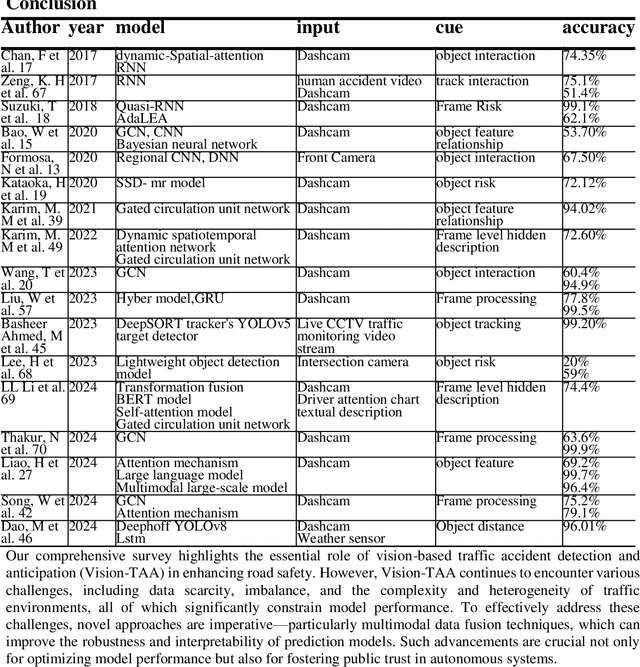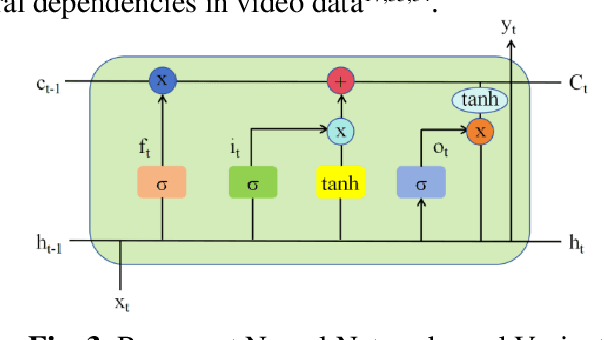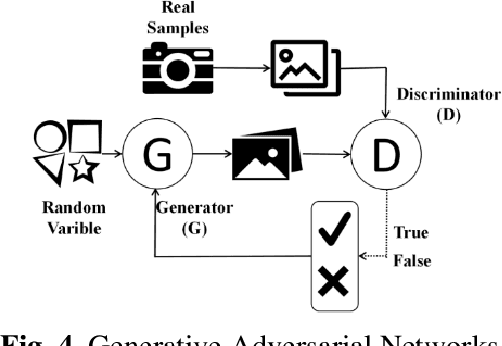Hao Zheng
School of Computer Science and Engineering, Central South University, Changsha, China
X-ray Insights Unleashed: Pioneering the Enhancement of Multi-Label Long-Tail Data
Dec 24, 2025Abstract:Long-tailed pulmonary anomalies in chest radiography present formidable diagnostic challenges. Despite the recent strides in diffusion-based methods for enhancing the representation of tailed lesions, the paucity of rare lesion exemplars curtails the generative capabilities of these approaches, thereby leaving the diagnostic precision less than optimal. In this paper, we propose a novel data synthesis pipeline designed to augment tail lesions utilizing a copious supply of conventional normal X-rays. Specifically, a sufficient quantity of normal samples is amassed to train a diffusion model capable of generating normal X-ray images. This pre-trained diffusion model is subsequently utilized to inpaint the head lesions present in the diseased X-rays, thereby preserving the tail classes as augmented training data. Additionally, we propose the integration of a Large Language Model Knowledge Guidance (LKG) module alongside a Progressive Incremental Learning (PIL) strategy to stabilize the inpainting fine-tuning process. Comprehensive evaluations conducted on the public lung datasets MIMIC and CheXpert demonstrate that the proposed method sets a new benchmark in performance.
Seedance 1.5 pro: A Native Audio-Visual Joint Generation Foundation Model
Dec 23, 2025Abstract:Recent strides in video generation have paved the way for unified audio-visual generation. In this work, we present Seedance 1.5 pro, a foundational model engineered specifically for native, joint audio-video generation. Leveraging a dual-branch Diffusion Transformer architecture, the model integrates a cross-modal joint module with a specialized multi-stage data pipeline, achieving exceptional audio-visual synchronization and superior generation quality. To ensure practical utility, we implement meticulous post-training optimizations, including Supervised Fine-Tuning (SFT) on high-quality datasets and Reinforcement Learning from Human Feedback (RLHF) with multi-dimensional reward models. Furthermore, we introduce an acceleration framework that boosts inference speed by over 10X. Seedance 1.5 pro distinguishes itself through precise multilingual and dialect lip-syncing, dynamic cinematic camera control, and enhanced narrative coherence, positioning it as a robust engine for professional-grade content creation. Seedance 1.5 pro is now accessible on Volcano Engine at https://console.volcengine.com/ark/region:ark+cn-beijing/experience/vision?type=GenVideo.
ODMA: On-Demand Memory Allocation Framework for LLM Serving on LPDDR-Class Accelerators
Dec 10, 2025Abstract:Serving large language models (LLMs) on accelerators with poor random-access bandwidth (e.g., LPDDR5-based) is limited by current memory managers. Static pre-allocation wastes memory, while fine-grained paging (e.g., PagedAttention) is ill-suited due to high random-access costs. Existing HBM-centric solutions do not exploit the characteristics of random-access-constrained memory (RACM) accelerators like Cambricon MLU370. We present ODMA, an on-demand memory allocation framework for RACM. ODMA addresses distribution drift and heavy-tailed requests by coupling a lightweight length predictor with dynamic bucket partitioning and a large-bucket safeguard. Boundaries are periodically updated from live traces to maximize utilization. On Alpaca and Google-NQ, ODMA improves prediction accuracy of prior work significantly (e.g., from 82.68% to 93.36%). Serving DeepSeek-R1-Distill-Qwen-7B on Cambricon MLU370-X4, ODMA raises memory utilization from 55.05% to 72.45% and improves RPS and TPS by 29% and 27% over static baselines. This demonstrates that hardware-aware allocation unlocks efficient LLM serving on RACM platforms.
TopoPerception: A Shortcut-Free Evaluation of Global Visual Perception in Large Vision-Language Models
Nov 14, 2025Abstract:Large Vision-Language Models (LVLMs) typically align visual features from an encoder with a pre-trained Large Language Model (LLM). However, this makes the visual perception module a bottleneck, which constrains the overall capabilities of LVLMs. Conventional evaluation benchmarks, while rich in visual semantics, often contain unavoidable local shortcuts that can lead to an overestimation of models' perceptual abilities. Here, we introduce TopoPerception, a benchmark that leverages topological properties to rigorously evaluate the global visual perception capabilities of LVLMs across various granularities. Since topology depends on the global structure of an image and is invariant to local features, TopoPerception enables a shortcut-free assessment of global perception, fundamentally distinguishing it from semantically rich tasks. We evaluate state-of-the-art models on TopoPerception and find that even at the coarsest perceptual granularity, all models perform no better than random chance, indicating a profound inability to perceive global visual features. Notably, a consistent trend emerge within model families: more powerful models with stronger reasoning capabilities exhibit lower accuracy. This suggests that merely scaling up models is insufficient to address this deficit and may even exacerbate it. Progress may require new training paradigms or architectures. TopoPerception not only exposes a critical bottleneck in current LVLMs but also offers a lens and direction for improving their global visual perception. The data and code are publicly available at: https://github.com/Wenhao-Zhou/TopoPerception.
Heterogeneous Complementary Distillation
Nov 14, 2025Abstract:Knowledge distillation (KD)transfers the dark knowledge from a complex teacher to a compact student. However, heterogeneous architecture distillation, such as Vision Transformer (ViT) to ResNet18, faces challenges due to differences in spatial feature representations.Traditional KD methods are mostly designed for homogeneous architectures and hence struggle to effectively address the disparity. Although heterogeneous KD approaches have been developed recently to solve these issues, they often incur high computational costs and complex designs, or overly rely on logit alignment, which limits their ability to leverage the complementary features. To overcome these limitations, we propose Heterogeneous Complementary Distillation (HCD),a simple yet effective framework that integrates complementary teacher and student features to align representations in shared logits.These logits are decomposed and constrained to facilitate diverse knowledge transfer to the student. Specifically, HCD processes the student's intermediate features through convolutional projector and adaptive pooling, concatenates them with teacher's feature from the penultimate layer and then maps them via the Complementary Feature Mapper (CFM) module, comprising fully connected layer,to produce shared logits.We further introduce Sub-logit Decoupled Distillation (SDD) that partitions the shared logits into n sub-logits, which are fused with teacher's logits to rectify classification.To ensure sub-logit diversity and reduce redundant knowledge transfer, we propose an Orthogonality Loss (OL).By preserving student-specific strengths and leveraging teacher knowledge,HCD enhances robustness and generalization in students.Extensive experiments on the CIFAR-100, Fine-grained (e.g., CUB200)and ImageNet-1K datasets demonstrate that HCD outperforms state-of-the-art KD methods,establishing it as an effective solution for heterogeneous KD.
A Hybrid Framework Bridging CNN and ViT based on Theory of Evidence for Diabetic Retinopathy Grading
Oct 30, 2025Abstract:Diabetic retinopathy (DR) is a leading cause of vision loss among middle-aged and elderly people, which significantly impacts their daily lives and mental health. To improve the efficiency of clinical screening and enable the early detection of DR, a variety of automated DR diagnosis systems have been recently established based on convolutional neural network (CNN) or vision Transformer (ViT). However, due to the own shortages of CNN / ViT, the performance of existing methods using single-type backbone has reached a bottleneck. One potential way for the further improvements is integrating different kinds of backbones, which can fully leverage the respective strengths of them (\emph{i.e.,} the local feature extraction capability of CNN and the global feature capturing ability of ViT). To this end, we propose a novel paradigm to effectively fuse the features extracted by different backbones based on the theory of evidence. Specifically, the proposed evidential fusion paradigm transforms the features from different backbones into supporting evidences via a set of deep evidential networks. With the supporting evidences, the aggregated opinion can be accordingly formed, which can be used to adaptively tune the fusion pattern between different backbones and accordingly boost the performance of our hybrid model. We evaluated our method on two publicly available DR grading datasets. The experimental results demonstrate that our hybrid model not only improves the accuracy of DR grading, compared to the state-of-the-art frameworks, but also provides the excellent interpretability for feature fusion and decision-making.
OFFSIDE: Benchmarking Unlearning Misinformation in Multimodal Large Language Models
Oct 26, 2025Abstract:Advances in Multimodal Large Language Models (MLLMs) intensify concerns about data privacy, making Machine Unlearning (MU), the selective removal of learned information, a critical necessity. However, existing MU benchmarks for MLLMs are limited by a lack of image diversity, potential inaccuracies, and insufficient evaluation scenarios, which fail to capture the complexity of real-world applications. To facilitate the development of MLLMs unlearning and alleviate the aforementioned limitations, we introduce OFFSIDE, a novel benchmark for evaluating misinformation unlearning in MLLMs based on football transfer rumors. This manually curated dataset contains 15.68K records for 80 players, providing a comprehensive framework with four test sets to assess forgetting efficacy, generalization, utility, and robustness. OFFSIDE supports advanced settings like selective unlearning and corrective relearning, and crucially, unimodal unlearning (forgetting only text data). Our extensive evaluation of multiple baselines reveals key findings: (1) Unimodal methods (erasing text-based knowledge) fail on multimodal rumors; (2) Unlearning efficacy is largely driven by catastrophic forgetting; (3) All methods struggle with "visual rumors" (rumors appear in the image); (4) The unlearned rumors can be easily recovered and (5) All methods are vulnerable to prompt attacks. These results expose significant vulnerabilities in current approaches, highlighting the need for more robust multimodal unlearning solutions. The code is available at \href{https://github.com/zh121800/OFFSIDE}{https://github.com/zh121800/OFFSIDE}.
Label Smoothing Improves Gradient Ascent in LLM Unlearning
Oct 25, 2025Abstract:LLM unlearning has emerged as a promising approach, aiming to enable models to forget hazardous/undesired knowledge at low cost while preserving as much model utility as possible. Among existing techniques, the most straightforward method is performing Gradient Ascent (GA) w.r.t. the forget data, thereby forcing the model to unlearn the forget dataset. However, GA suffers from severe instability, as it drives updates in a divergent direction, often resulting in drastically degraded model utility. To address this issue, we propose Smoothed Gradient Ascent (SGA). SGA combines the forget data with multiple constructed normal data through a tunable smoothing rate. Intuitively, this extends GA from learning solely on the forget data to jointly learning across both forget and normal data, enabling more stable unlearning while better preserving model utility. Theoretically, we provide the theoretical guidance on the selection of the optimal smoothing rate. Empirically, we evaluate SGA on three benchmarks: TOFU, Harry Potter, and MUSE-NEWS. Experimental results demonstrate that SGA consistently outperforms the original Gradient Ascent (GA) method across all metrics and achieves top-2 performance among all baseline methods on several key metrics.
DiSC-Med: Diffusion-based Semantic Communications for Robust Medical Image Transmission
Jul 31, 2025Abstract:The rapid development of artificial intelligence has driven smart health with next-generation wireless communication technologies, stimulating exciting applications in remote diagnosis and intervention. To enable a timely and effective response for remote healthcare, efficient transmission of medical data through noisy channels with limited bandwidth emerges as a critical challenge. In this work, we propose a novel diffusion-based semantic communication framework, namely DiSC-Med, for the medical image transmission, where medical-enhanced compression and denoising blocks are developed for bandwidth efficiency and robustness, respectively. Unlike conventional pixel-wise communication framework, our proposed DiSC-Med is able to capture the key semantic information and achieve superior reconstruction performance with ultra-high bandwidth efficiency against noisy channels. Extensive experiments on real-world medical datasets validate the effectiveness of our framework, demonstrating its potential for robust and efficient telehealth applications.
Deep Learning Advances in Vision-Based Traffic Accident Anticipation: A Comprehensive Review of Methods,Datasets,and Future Directions
May 12, 2025



Abstract:Traffic accident prediction and detection are critical for enhancing road safety,and vision-based traffic accident anticipation (Vision-TAA) has emerged as a promising approach in the era of deep learning.This paper reviews 147 recent studies,focusing on the application of supervised,unsupervised,and hybrid deep learning models for accident prediction,alongside the use of real-world and synthetic datasets.Current methodologies are categorized into four key approaches: image and video feature-based prediction, spatiotemporal feature-based prediction, scene understanding,and multimodal data fusion.While these methods demonstrate significant potential,challenges such as data scarcity,limited generalization to complex scenarios,and real-time performance constraints remain prevalent. This review highlights opportunities for future research,including the integration of multimodal data fusion, self-supervised learning,and Transformer-based architectures to enhance prediction accuracy and scalability.By synthesizing existing advancements and identifying critical gaps, this paper provides a foundational reference for developing robust and adaptive Vision-TAA systems,contributing to road safety and traffic management.
 Add to Chrome
Add to Chrome Add to Firefox
Add to Firefox Add to Edge
Add to Edge